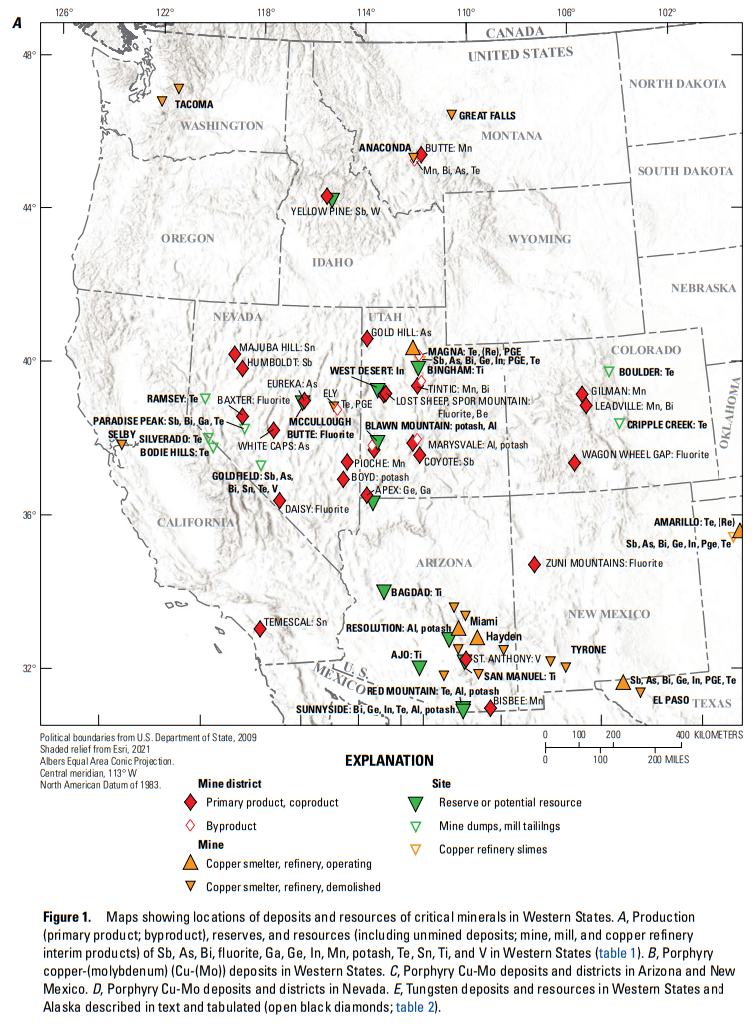USGS study highlights potential of significant critical mineral resources in the Western U.S.
RESTON, Va. — Better recovery of critical minerals from unmined deposits, active mines, existing processing facilities, and legacy mine sites could potentially meet decades of demand, according to a recent report by the USGS.
The report is based on a multitude of existing sources, including reserve and production data from industry, as well as analyses of drill holes and mineral system models of subduction-related magmatic-hydrothermal deposits.
The report analyzed the mineral potential of deposits in geological features called subduction-related magmatic-hydrothermal systems, and the concentrations of critical minerals such as antimony, bismuth, germanium, tellurium, and others in copper refinery processing streams, to estimate potential resources of unrecovered critical minerals. The results suggest that import reliance for many of these minerals “could be reduced or eliminated by recovery or more efficient recovery during copper refining, although improved recovery techniques need to be developed.”
“As the list of mineral resources considered critical grows, there’s opportunity to learn more about where these critical minerals occur and how they form,” said USGS scientist Peter Vikre, who led the study. “This report focuses on understanding the critical mineral potential of deposits common in the Western US and highlights the potentially important resources in unmined deposits, mine reserves, tailings and refinery wastes.”
Subduction-related magmatic-hydrothermal systems are formed by tectonic forces deep underground when one tectonic plate slides beneath another. This process can cause molten rock, called magma, to form at depth and rise into overlying solid rock, as well as create fractures in the overlying rock that provide flow paths for the magma, heated groundwater and dissolved mineral components. These systems can concentrate minerals into mineable deposits. There are numerous such deposits being mined in western states, including the very large Bingham Canyon copper mine in Utah.
This report is part of a broader effort by the USGS to understand the Nation’s mineral resources, which also includes the Earth Mapping Resources Initiative’s mapping of minerals both still in the ground and in mine waste, development of the US Mineral Deposit Database of all current and historical mine sites, and assessments of the critical mineral resources of the United States.
The report can be accessed here. More information on USGS mineral resources research can be found here. To stay up to date on USGS mineral resources data and reports, follow us on Twitter.



